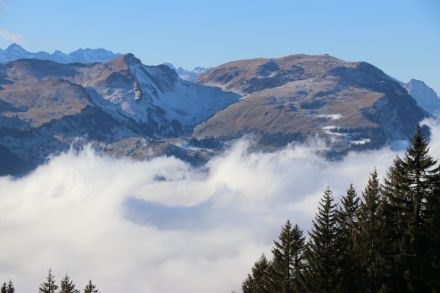Service Navigation
Search
There are various reasons for these movements:
- When the air warms up during the day, the fog-top height tends to rise somewhat and then sink again at night. This effect is more pronounced in the autumn months than in winter.
- At the transition zones of the fog, temperature and thus pressure differences arise towards the fog-free regions. This is why the fog is often drawn into the initially fog-free Alpine foothills during the day.
- Just as in the ocean, a sea of fog is subject to waves passing through it.
- Changes in pressure distribution, changing wind conditions at the fog top and large-scale uplift effects all strongly influence the movements of the sea of fog.
The images and time-lapse videos below illustrate some of these processes.
